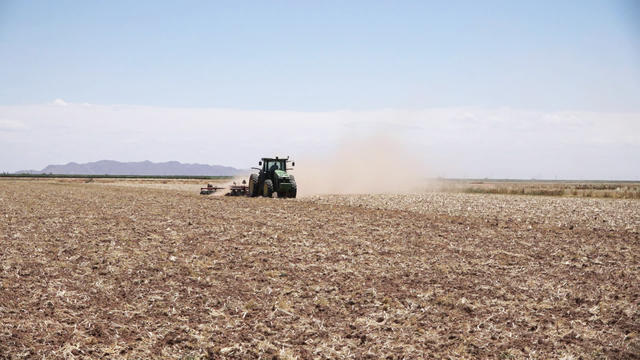▶ Watch Video: What the megadrought means to the American West
San Jose, California — The Santa Clara Valley Water District is embarking on an effort to revamp the image of purified wastewater and lay the groundwork for replenishing local aquifers, reports CBS San Francisco.
Speaking at a press event at the Silicon Valley Advanced Water Purification Center, district CEO Rick Callender addressed the need to continue to conserve while also developing ways to increase the water supply.
At the event, staffers passed out bottles of water to elected officials and dignitaries with this message printed on the label: “This used to be waste water #GetOverIt.”
“(Recycled water) may have an image problem but I think once people are educated, they’ll fully understand that, if you look at the ecosystem, all water is recycled,” Callender pointed out.
The purification center receives water from the San José-Santa Clara Regional Wastewater Facility across the street, which is pumped through a micro-filtration, reverse-osmosis system and passed through UV lights.
At this stage, the water is cleaner than what can be achieved with home filtration systems, according to the district. However, it can’t legally be deemed “potable” (drinkable) until it undergoes “advanced oxidation.” The district is seeking to upgrade the purification center and install the technology.
Currently, the purification center puts out 8 million gallons per day. The vast majority is diverted for industrial use, irrigating landscape and agricultural crops.
Once the water is deemed potable, it will be up to the state Water Resources Control Board to approve the use of the millions of gallons of purified water to recharge aquifers in Campbell.
Callender remarked on the district’s effort to nudge the water resources board into swift action.
“I think this is just the start of a conversation that we need to have. We need to have it now; we need to finish and we need to be able to find ways to make sure we can use advanced treated water for the water supply. I think this is just the start of a very long conversation and, hopefully, the state will be able to push and put their foot on the regulatory gas pedal and figure out how to make this happen quick,” Callender said.
“We’re in the worst drought since the 70s. Our reservoirs are empty if climate change is not going away. Droughts are not going away,” Callender said.
The district will decide whether to expand the current water purification center or build a new facility in Palo Alto. Callender said the district is exploring options to do both.


































